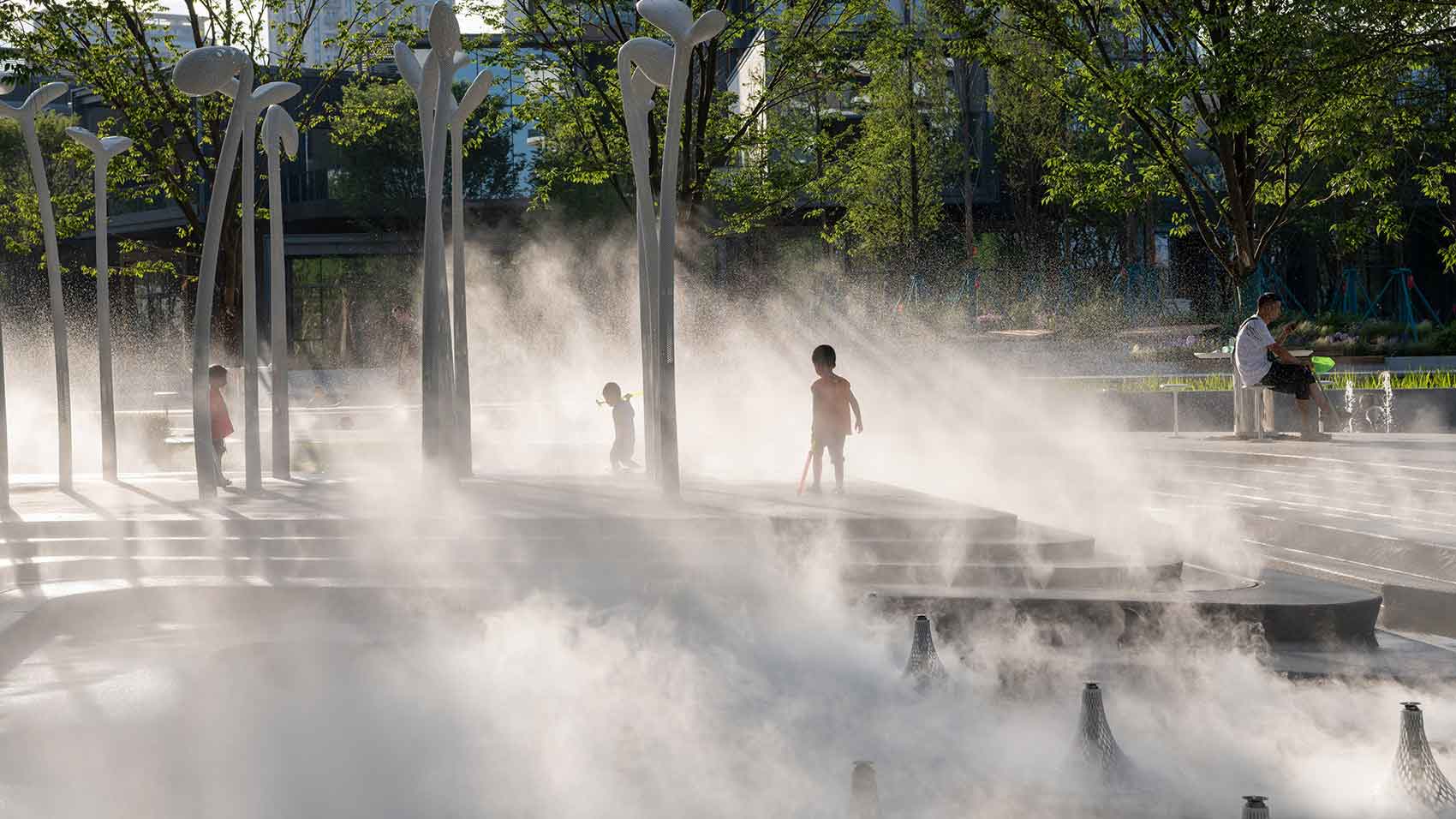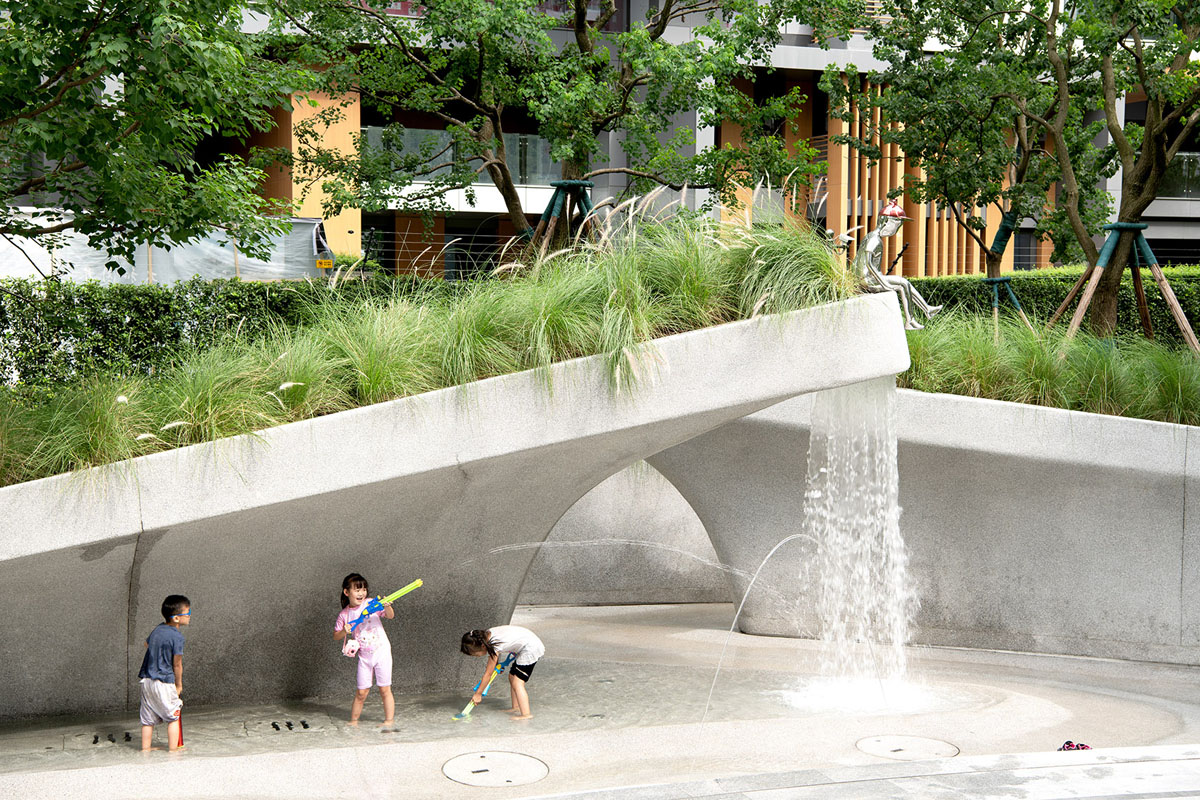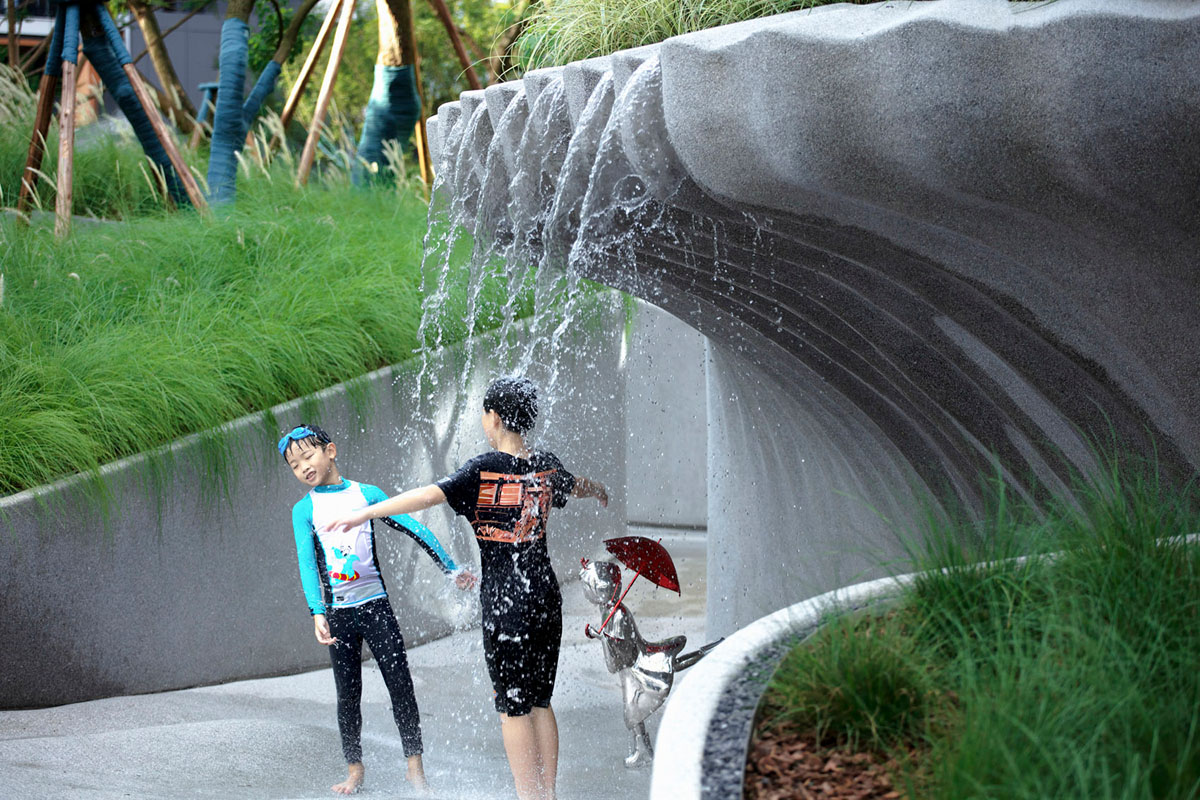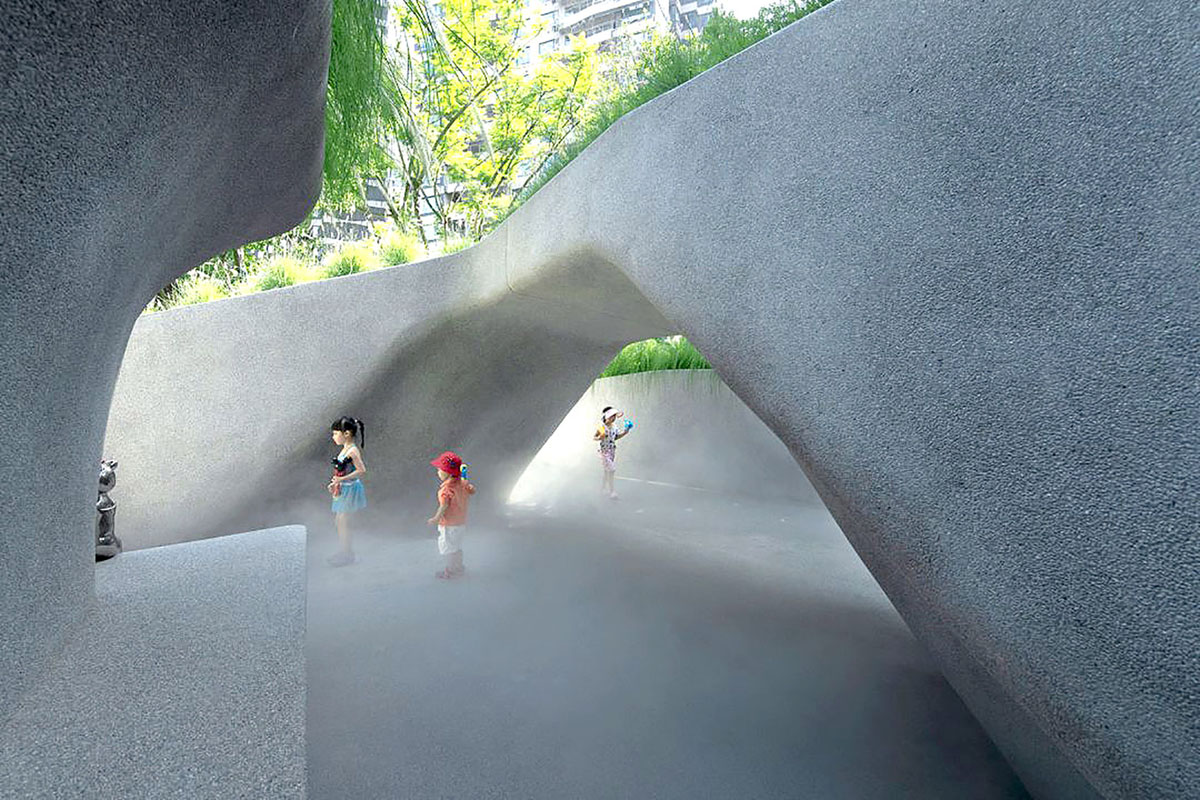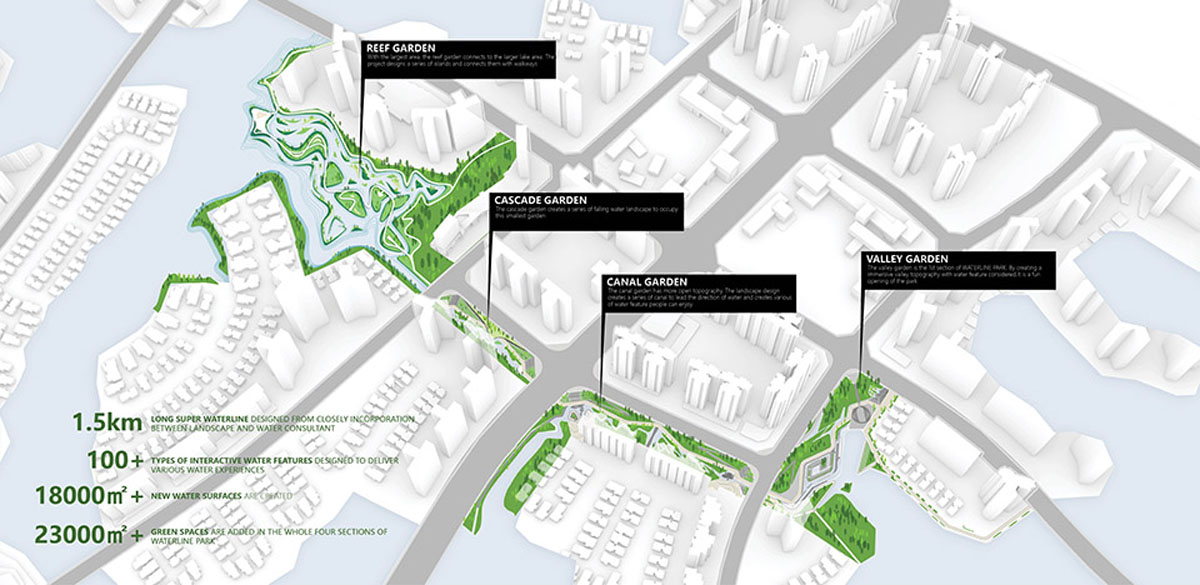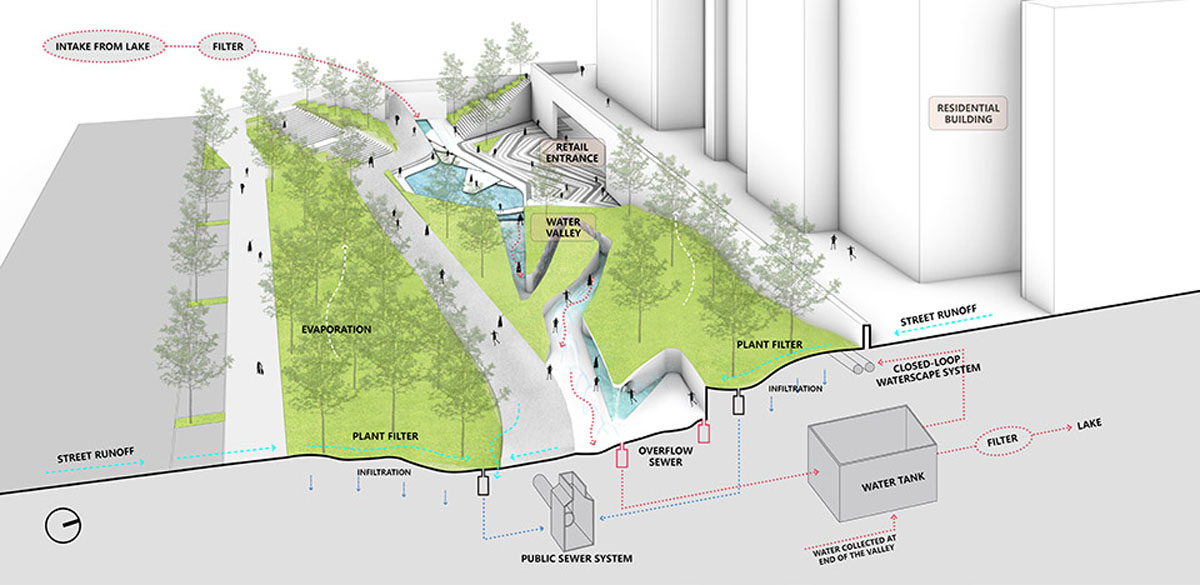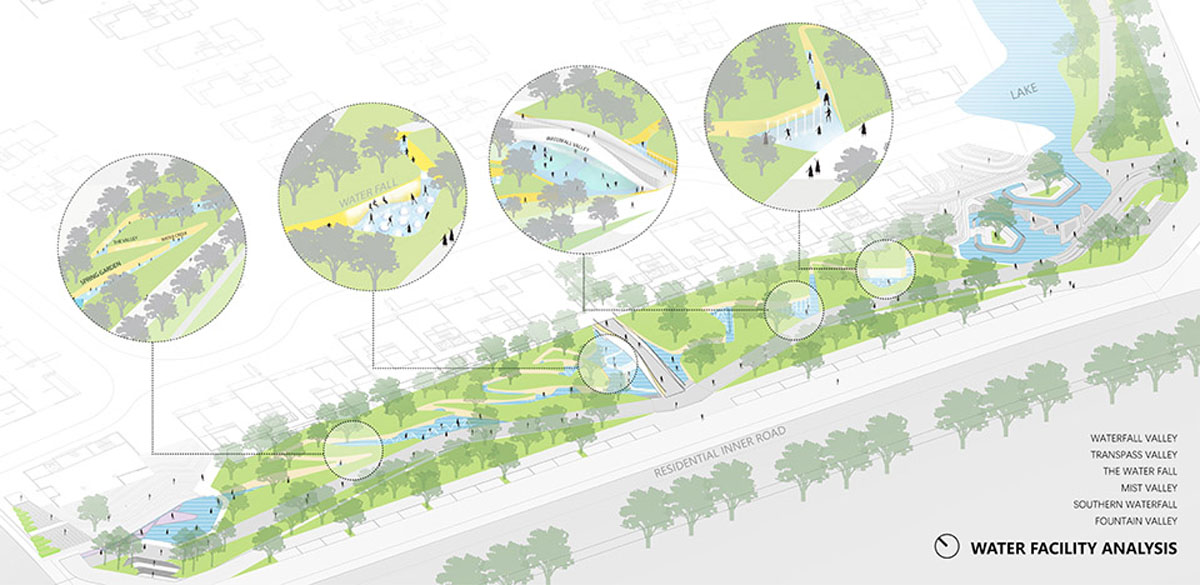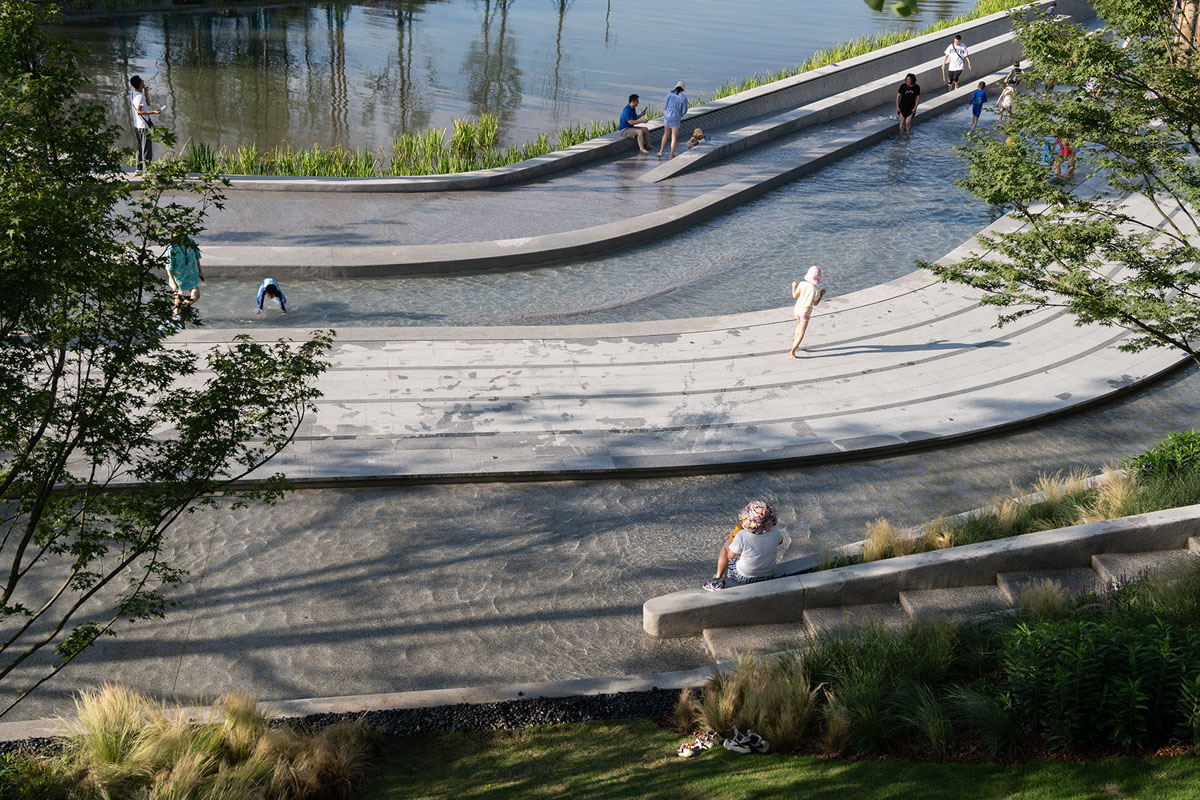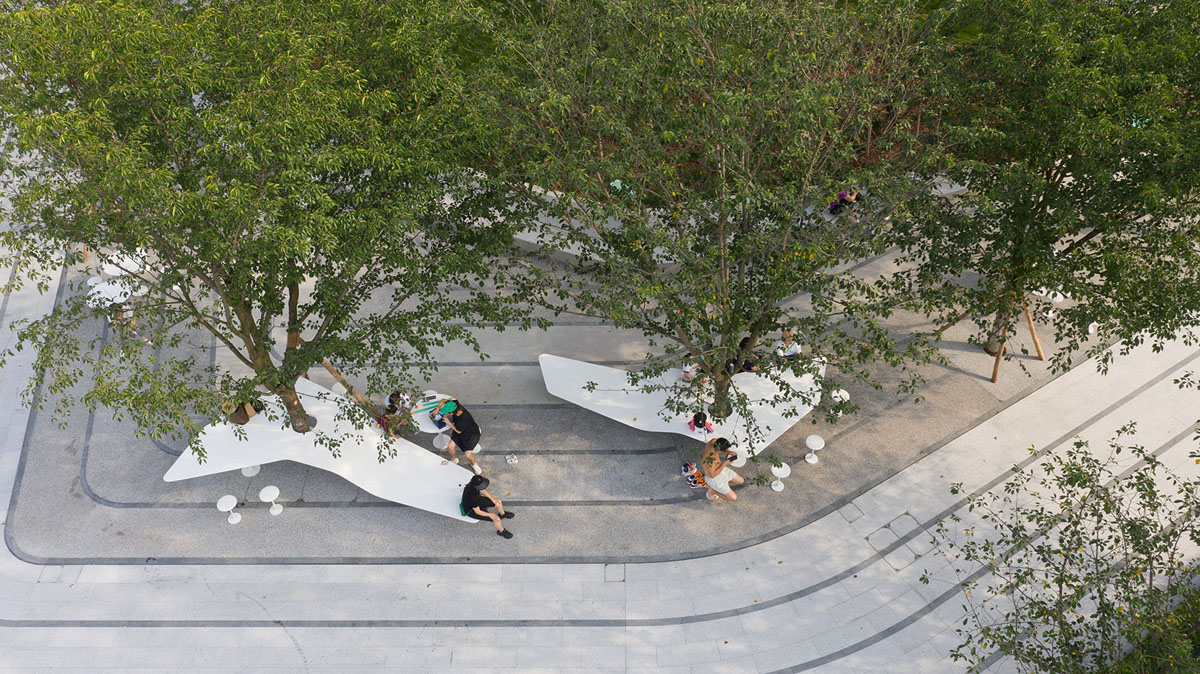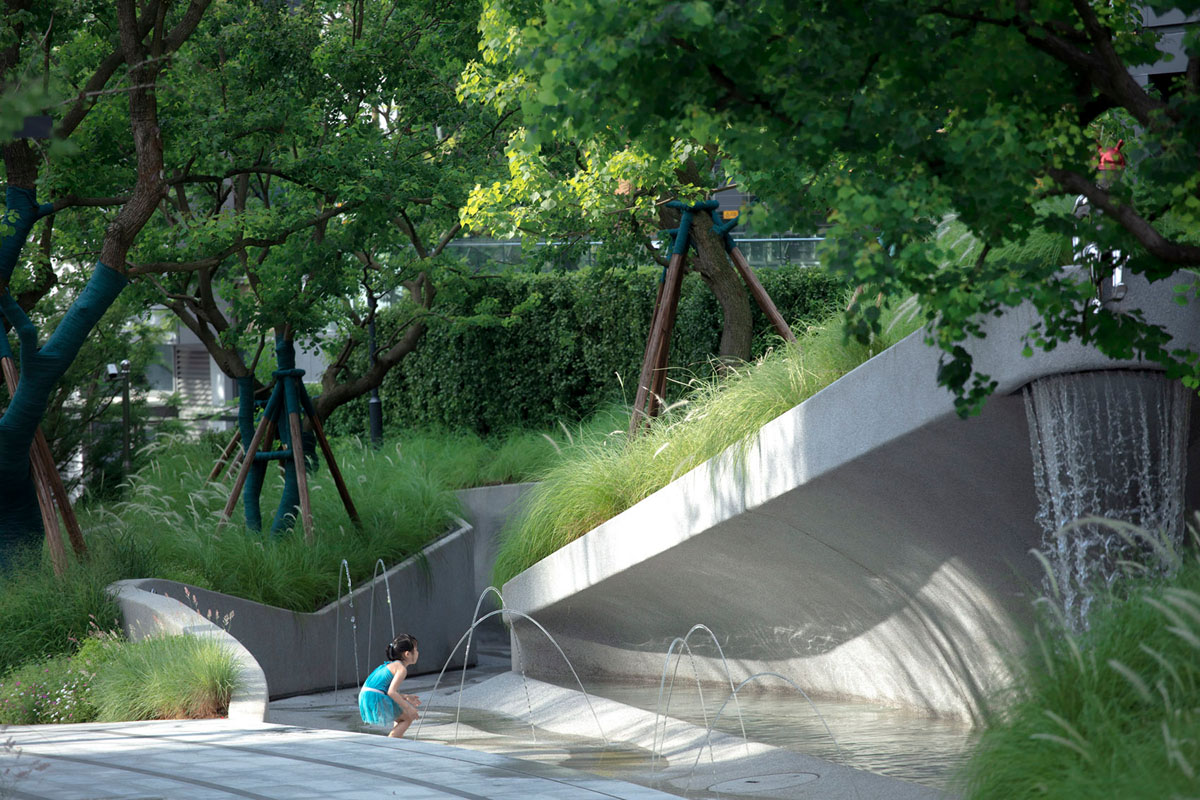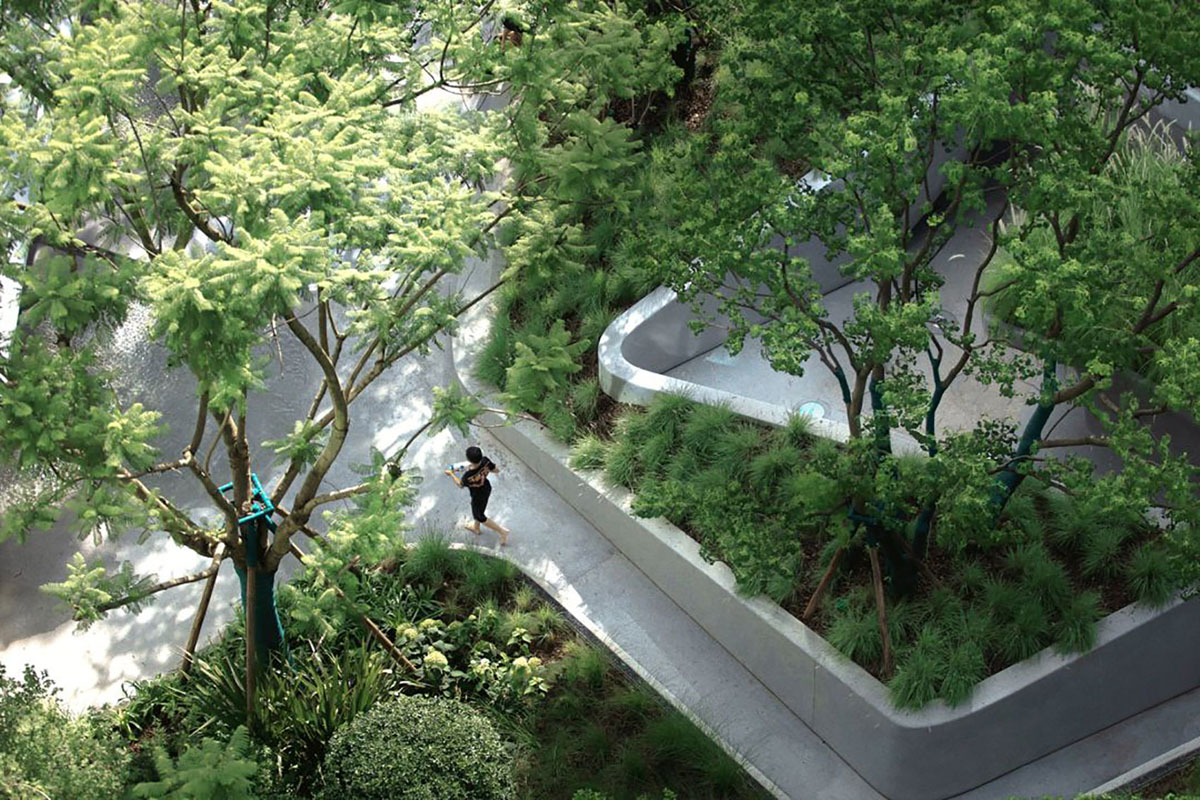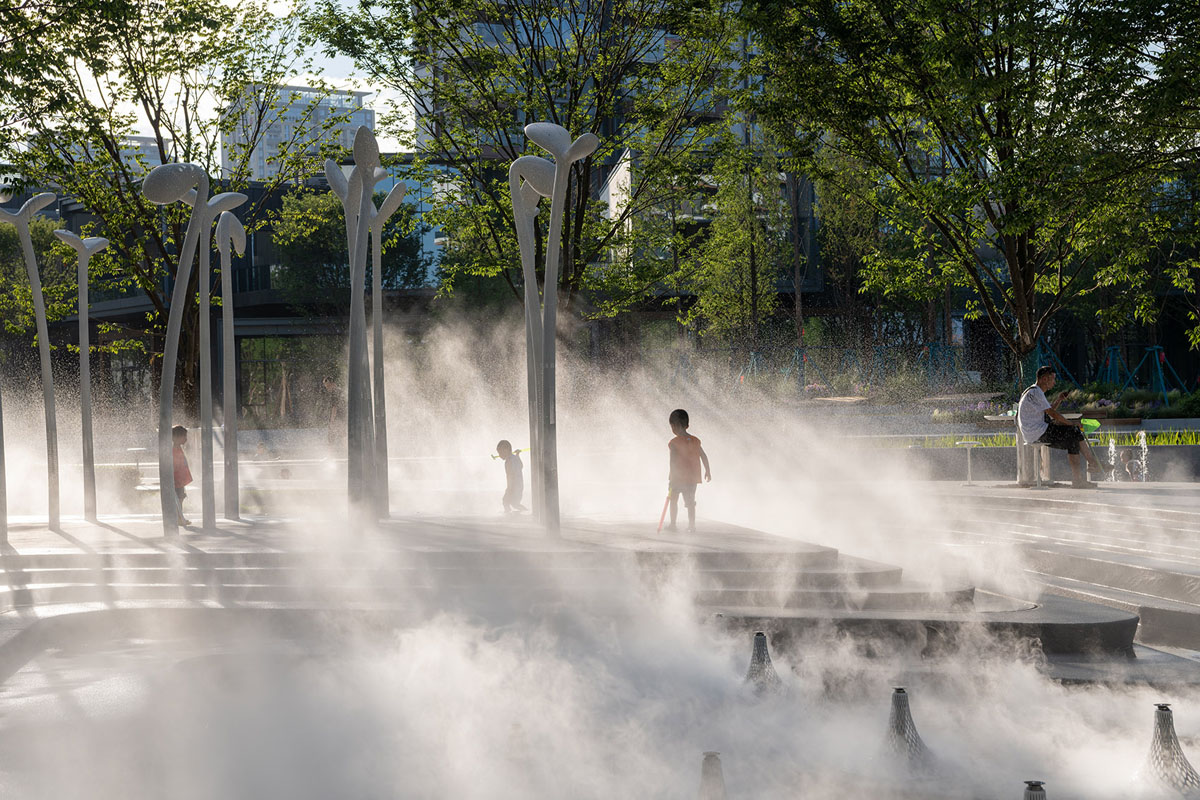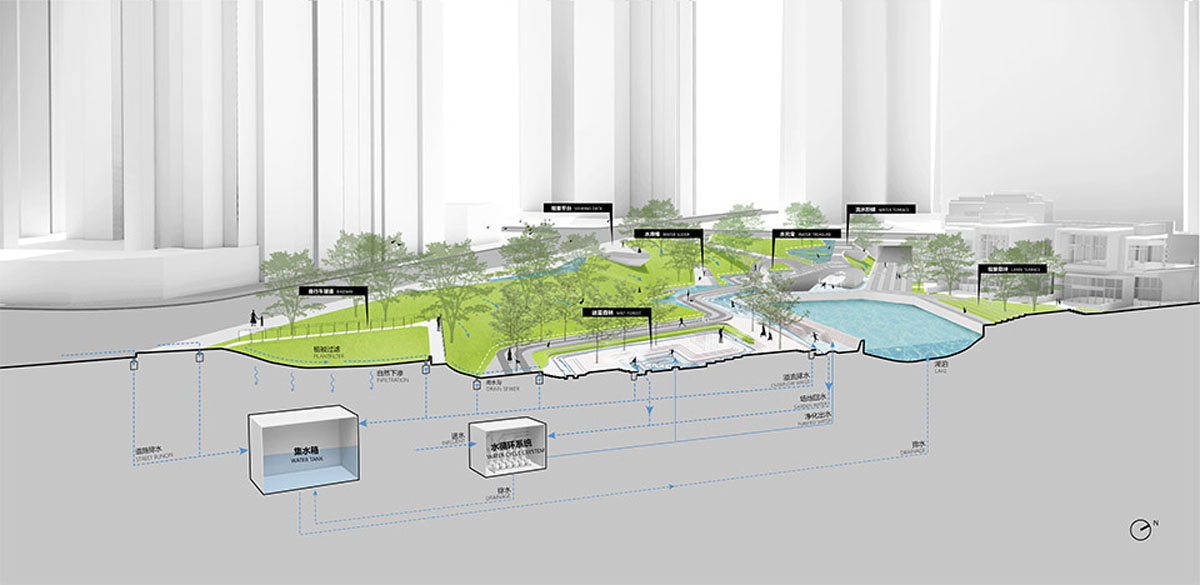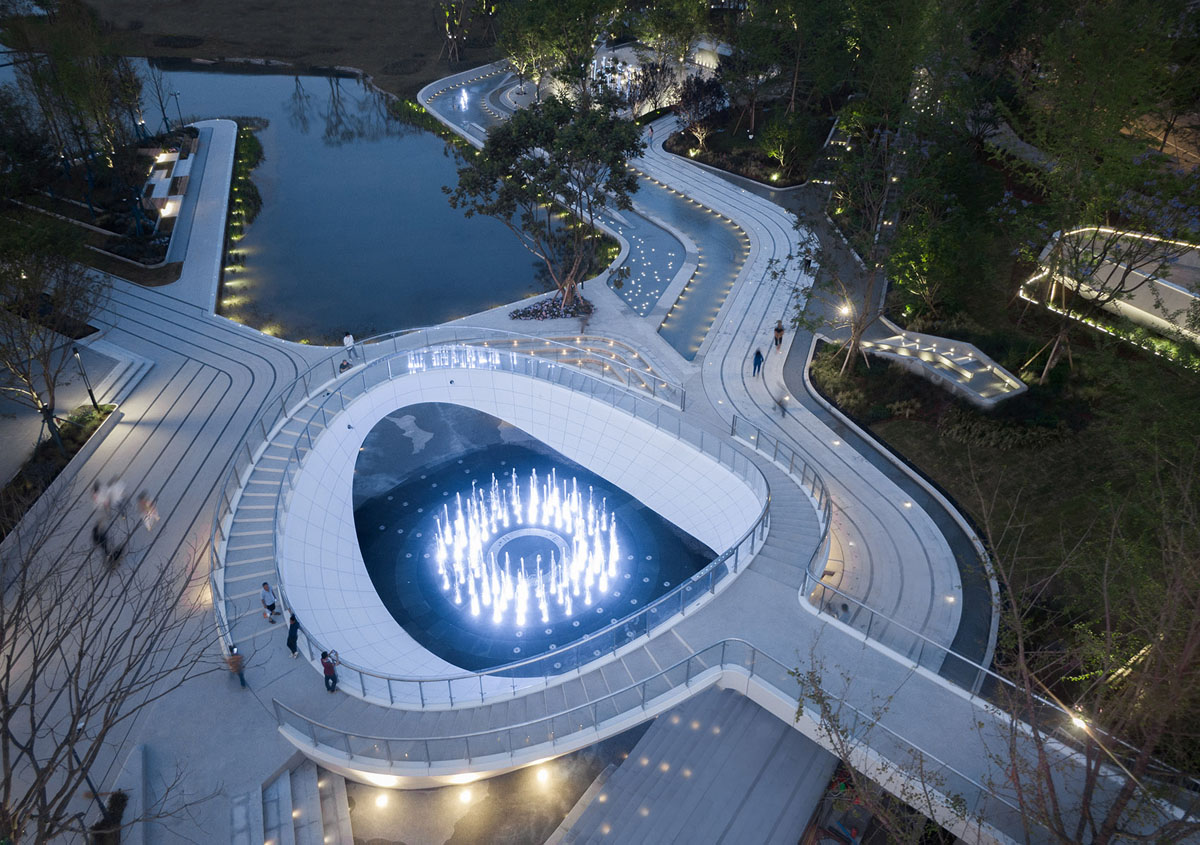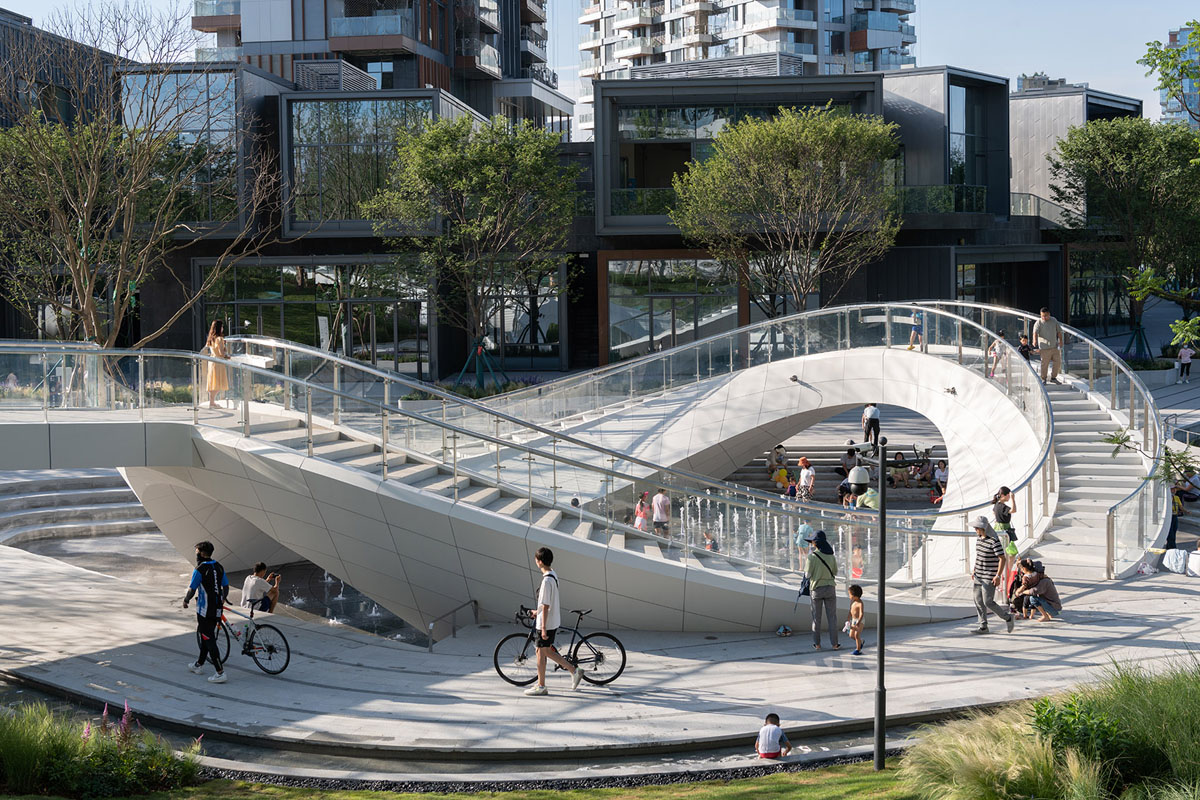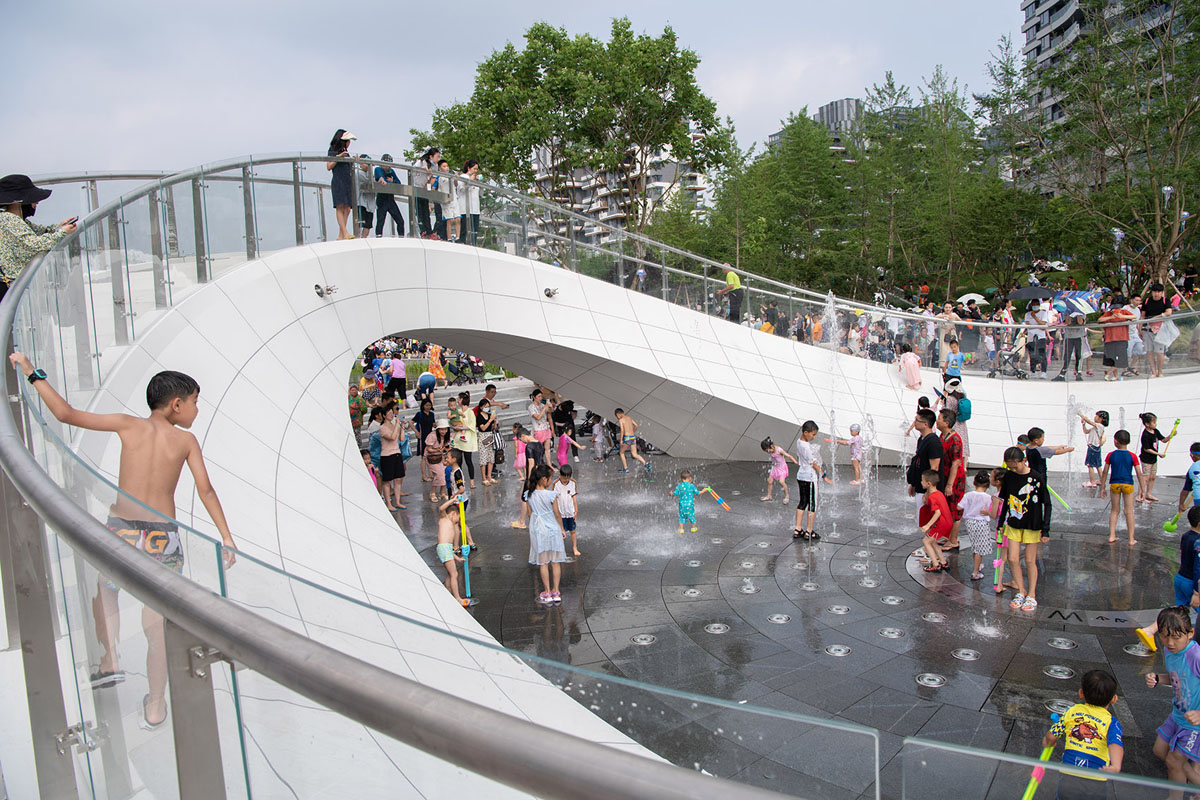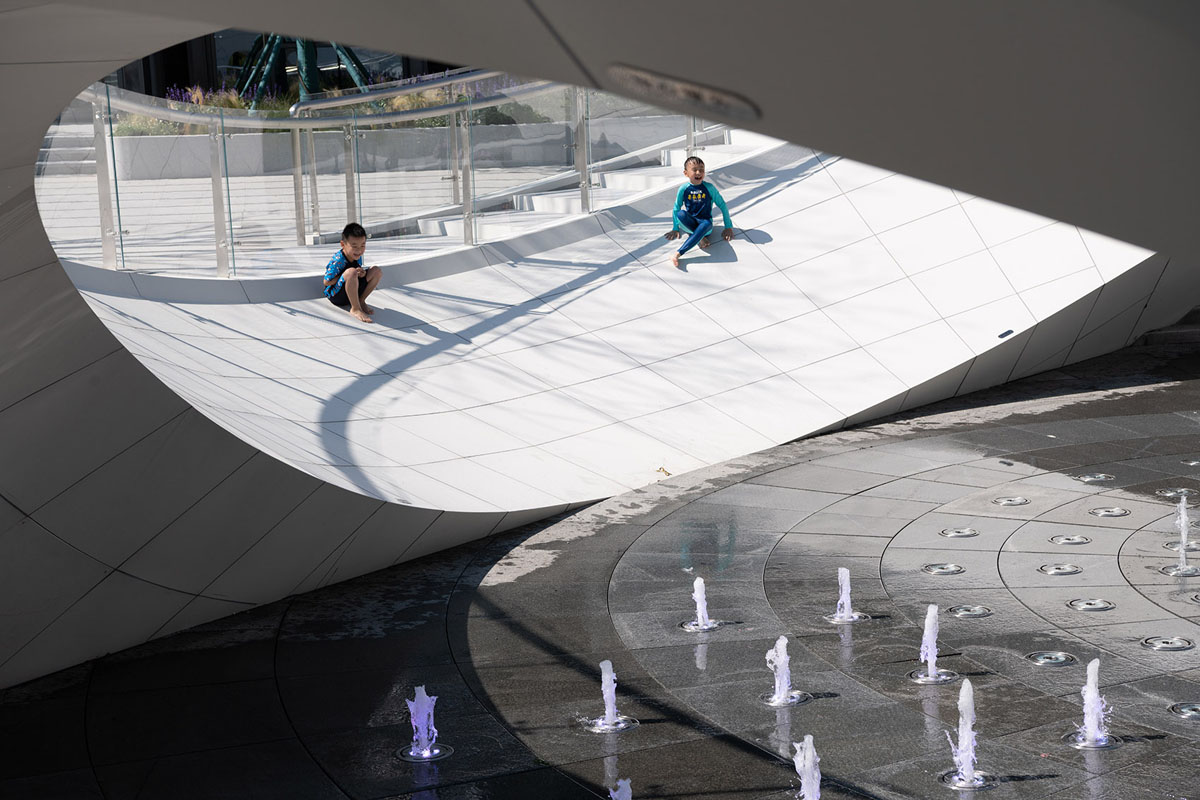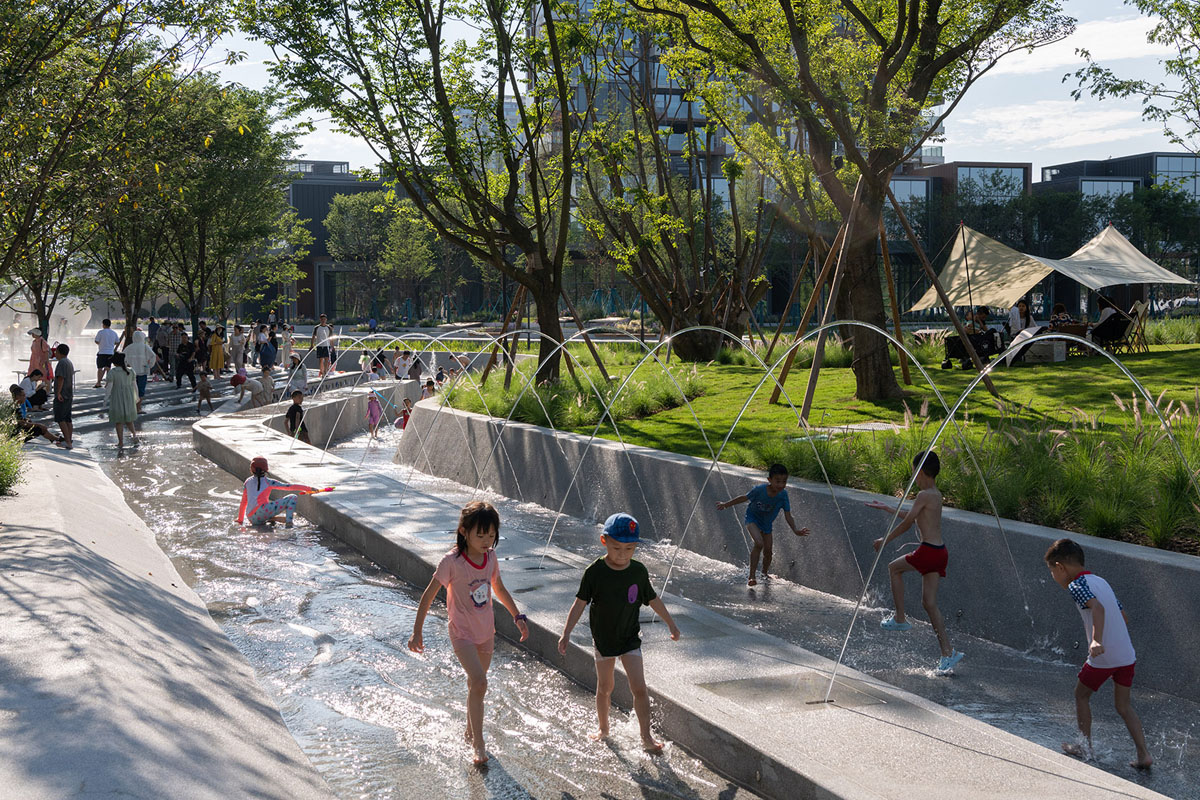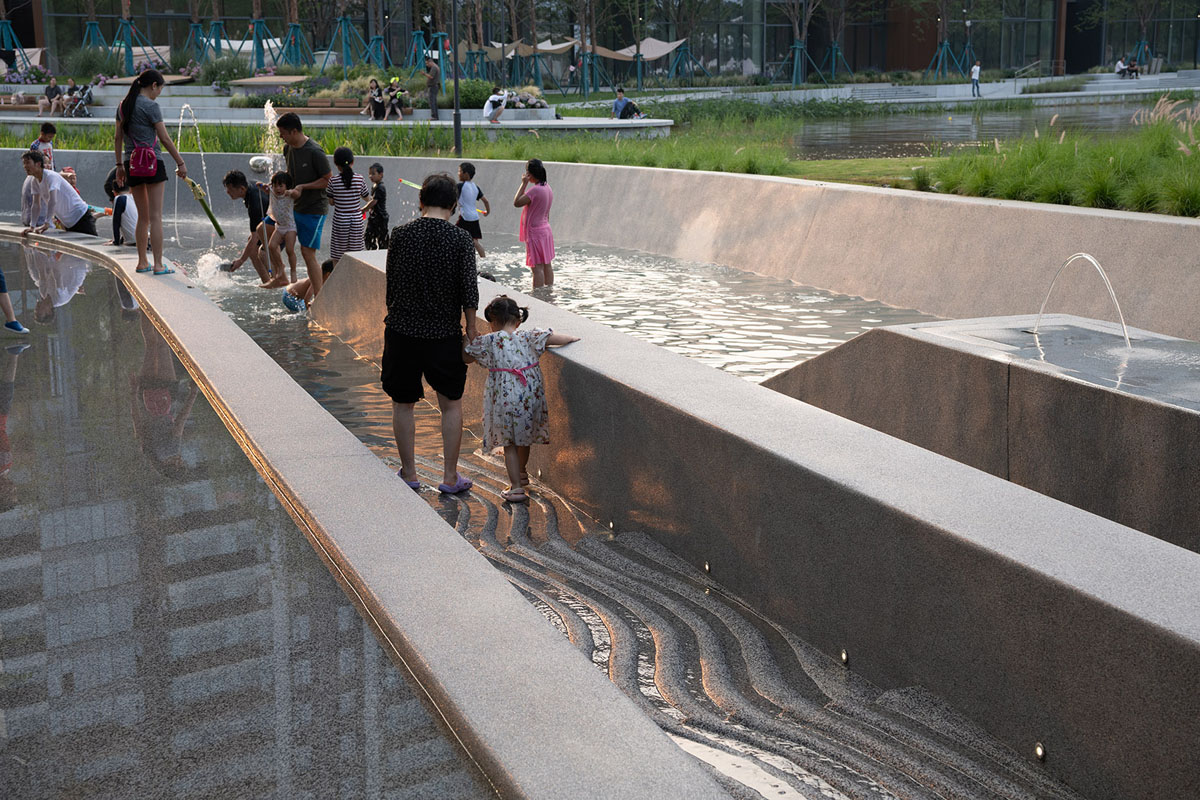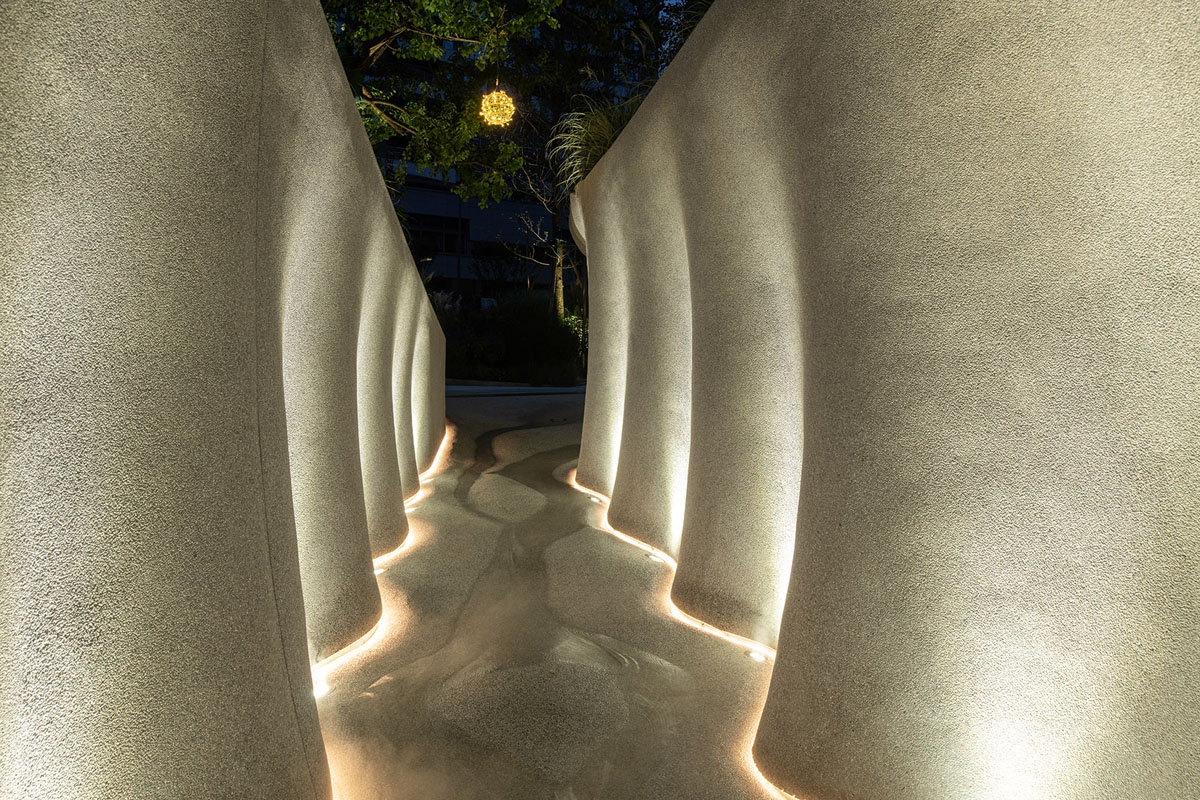Chengdu is the capital of Sichuan province in central China. Situated on a vast plain between the high and steep mountains of Longmen, Qionglai and Xiling, a number of rivers run through the geographical area from north to south, including the largest, the Min River. Water is therefore a key element, fundamental to the life of the region. Water is precisely the backbone of the public park project that has caught our attention and to which we dedicate this space. It is the Waterline Park, recently built in one of the city’s neighbourhoods, designed by the architectural studio Lab D+H and commissioned by the Chengdu Wide Horizon Investment Group, which defines itself as “an eco-friendly city developer”.
The Chengdu Waterline Park is not only a landscaping project in a residential area, but also a playful attraction for children to play and adults to recreate with water. But it also has a third potential, because, in the words of its designers, “the distance between man and nature is narrowed”. The success of the design, architecture and construction of the Waterline Park therefore lies in the fact that it harmoniously brings together these three motifs: landscape, play and nature.
Beyond its formal aspect, the project has succeeded in revitalising a large urban space in the city of Chengdu. Indeed, as its architects put it, “before construction, the scattered and divided community structure left residents rather confined in their own spaces”. Now that it has been implemented, the hugely popular park now fulfils the intentions of the Lab D+H design team: “to attract residents from diverse communities and reconnect their daily lives through the theme of water.
The designers tell us that the design of the Waterline Park conformed to the “relatively typical dimensions for “surplus” empty spaces in the inner-city areas of Chengdu”, in this case 1.5 km long and only 40 m wide at its narrowest point, with slopes of up to almost 5 m. At the same time, the designers considered the hydrological characteristics of Sichuan Province in designing the four ‘hydroparks‘ of which it is composed: Chuanshui Park (or “Cross the Water” Park), Fenshui Park (translated, “Distribute the Water” Park), Dieshui Park (literally, “Raise the Water” Park) and Huanshui Park (or “Embrace the Water” Park in Mandarin). In them, they established reservoirs, lowlands, overlapping ponds and islands. The design team also prescribed the planting of powerful vegetation “to skilfully and organically integrate water into the landscape”. In addition, the use of water is seasonally adjusted, so that the Waterline Park contains “two different landscapes, one for the wet season and one for the dry season“. It should be added that, thanks to creative lighting, also underwater, it contains two more versions, daytime and night-time.
Finally, the Waterline Park takes advantage of the unevenness of the terrain and lets water flow from the upper footbridge to the pond below, so that the depth and speed of its flow is different in each of the passages. Meanwhile, it offers residents “diversified, interactive” experiences along the way, with “gently crashing waterfalls, lively fountains, and randomly triggered spraying installations”. Suffice it to add that the entire “waterscape interaction system” is controlled by time and zone division.
Sources: Gooood.
Images: Bing Lu, DiD Studio, Liangxiang Design, Babala, Holi Landscape Photography, Editorial Office of «Chengdu Style», Liu Chuan; vía Gooood.


